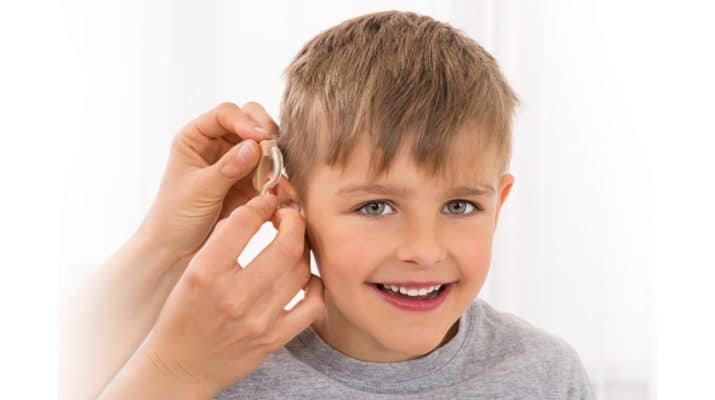Among children aged 6 to 19, 14.9% have some level of hearing loss
By Deborah Jeanne Sergeant
Every baby born in a US hospital receives a hearing screening. Of those, only a fraction 0.16% — have some level of hearing loss, according to the Centers for Disease Control and Prevention.
But among children aged 6 to 19, 14.9% have some level of hearing loss because of later onset hearing issues.
Addressing children’s communication needs as young as possible is very important and bears lifelong effects.
“Children use incidental learning from the environment to gain language,” said Ashley Eisen Graney, audiologist with Buffalo Hearing & Speech Center in Buffalo. “That language acquisition leads to reading skills and reading skills to academic achievement. Studies are coming out with definitely confirming that children with hearing loss in one ear should be fit. They don’t do as well in school and have behavioral issues. They are 10% more likely to fail a grade.”
Missing aspects of language acquisition without any means of intervention to improve communication can delay children’s learning, cognitive abilities, social development and eventual employment opportunities.
Fitting with hearing aids represents the most widely selected choice for mild to moderate hearing loss; however, some parents of children with severe to profound hearing loss choose to use sign language to complement their children’s growing communication skills.
However children acquire communication skills, it’s important to start early. If they do so through hearing aids, “we have a small window of time to get them fitted,” Graney said. “Studies show that if they go unaided, the part of the brain allocated to hearing gets rewired to other senses. That’s why we have newborn hearing screening in the hospital so they can get fitted for a hearing aid.”
Many objective tests exist for testing a baby for hearing loss. These can include placing electrodes on the head to measure the response of the auditory nerve. They can measure the brain’s response to sound even while the baby sleeps.
Working with a professional after they receive their child’s hearing loss diagnosis can help parents navigate.
“When parents are faced with having a child with hearing loss, they often feel at a loss for what comes next,” said Jill Bernstein, audiologist and assistant director at Hearing Evaluation Services of Buffalo. “Having a good audiologist with pediatric experience can make the process so much easier and help them understand what to expect over time.”
Hearing aids for babies differ quite a bit from those intended for adults. To make them appeal to children, hearing aids come in bright colors and patterns, similar to the effect of fun options for glasses. They also have low battery lights so parents know when to charge or change the battery. Their tamper-resistant battery doors help prevent ingestion. Children’s hearing aids are also compatible with hearing assistive technology (HAT) systems that allow parents’ or teachers’ voices to transmit directly from a microphone into the hearing aid, which reduces the effect of ambient noise interfering with the message. Manufacturers make children’s hearing aids more durable than their adult counterparts.
Accessories can help keep hearing aids on children. Many parents use a clip similar to that of a pacifier to keep hearing aids together and attached to the infant’s clothing so they don’t get lost.
“It’s definitely challenging,” Bernstein said. “The responsibility falls on parents. The hearing aids should be on every waking hours.”
Some parents use headbands, hats or aids with attachments that “hug” the child’s ear.
Fitting hearing aids is also different for children. Parents are more involved for pediatric fittings and device care, especially for infants who are both incapable of expressing their experience accurately and lack normal hearing experience for comparison.
Bernstein added that usually, infants receive a full prescription, unlike adults, who have to slowly adjust to hearing aids. Infants are seen every three to four months for adjustments as they grow. By about age five for most children, their ear canals are at adult size.
Working closely with an audiologist helps parents from learning of their child’s diagnosis through ongoing hearing aid care, device adjustments and obtaining the support the child needs at school and for extracurricular activities.
In-school supports are available to make sure children with hearing loss can have every opportunity possible to learn, such as speech therapists and aides to ensure they have their particular needs met.
Bernstein wants parents to embrace their role as their children’s best advocates “if there’s any question about meeting milestones,” she said. “We can test newborns and we have different techniques to cover any age. Insurance covers hearing tests. Talk with the pediatrician. A lot don’t do screening. A hearing screening should consist of something that’s frequency consistent, not whispering or rubbing fingers near the ear. That’s old school. A lot might send the child on for an audiologist evaluation.”

